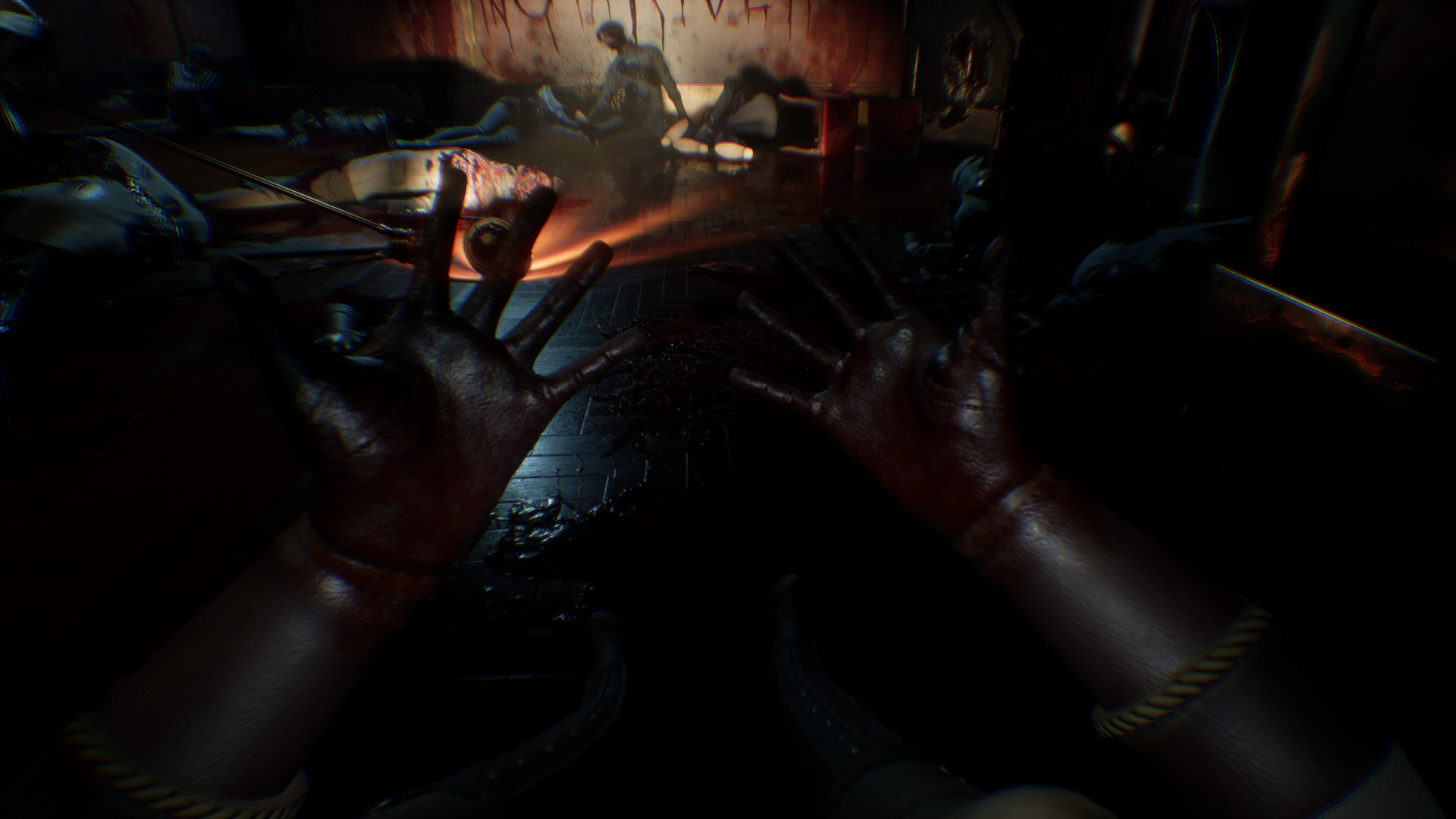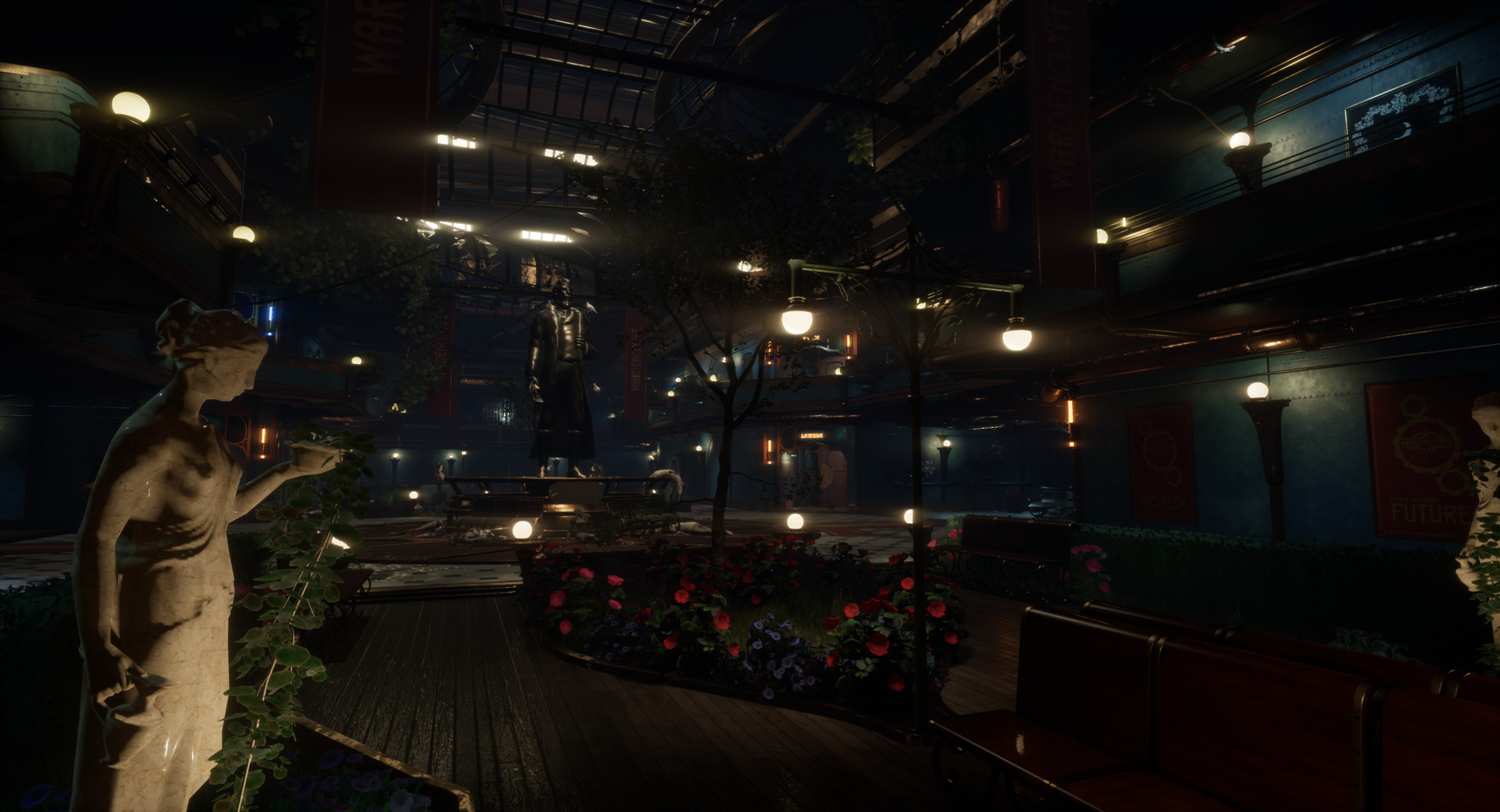
Introduction
After a certain point, ambition and hubris mix and form a deadly concoction. The myth of Icarus and his tragic demise can be summarized as someone who flew too close to the Sun and paid the ultimate price for not heeding his father’s advice and common sense. I’ve had my fair share of walking sims, yet the one I’ll be covering today is definitely among the finest in a long time.
It is the culmination of efforts undertaken by developer Storm in a Teacup (very fond of that phrase) whose journey over the past four years, saw them advance from the light-hearted themes in 2016’s Lantern to the literally dark tones in 2019’s Close to the Sun. After a brief stint as an Epic Games exclusive, we can finally play this mature adventure on Steam and I’ve been looking forward to writing about it on the one gaming platform fully supporting my little reviewing hobby.

Story
If you’re a fan of Nikola Tesla even remotely, I’m sure you heard of this game by now. Even if you aren’t, it’ll be hard not to empathize with one of the greatest minds of the 19th Century. A visionary and inventor who was sadly obscured and undermined by corporate greed.
Edison might have the present, but the future is mine. Not an exact quote, yet Close to the Sun is also loosely based on Tesla’s inventions and grand plans that never came to fruition. The game is a work of science fiction that, however, still has its foundations in a few plausible “what ifs”. As with most innovative theories, gathering the necessary funding to begin experimentation is the truly difficult phase.
Not so in this alternate timeline, in which Wardenclyffe (known for its non-operational Tesla Tower) became a highly successful company under Nikola’s careful guidance. Most of the inventor’s blueprints materialized into practical structures including an autonomous ship that served as company headquarters away from governmental oversight. Helios (“Sun” in ancient Greek) was not impervious to sabotage and espionage though.
Our story begins aboard a smaller transport vessel taking the female protagonist towards the “mothership” and an uncertain destiny. I was fortunately mistaken in my initial assessment of Close to the Sun. You won’t be (re)playing BioShock minus the guns and plasmids.

Rose Archer boards the Helios at her sister’s behest. A rescue mission ensues, one which holds much higher stakes than anticipated. As far as the narrative is concerned, its originality cannot be contested. It is indeed a “walking simulation” that will have you frequently running for your life, followed by more relaxed sequences in which you can take in the sights, so to speak.
Retrofuturism melding with the macabre elements of a still-unfolding tragedy. Since this is a Tesla-inspired sci-fi tale, it couldn’t dispense with wireless electricity or inter-dimensional travel. The dev team spent a lot of time creating auxiliary reading materials in-game, which manage to paint a vibrant picture of the late 19th Century in stark contrast with the violent reality of the early 20th that was slowly starting to catch up.
Graphics
Ceasing all praise for a moment, the technical difficulties of the inherently unstable Unreal Engine 4 ended up exacerbating some questionable stylistic choices in regards to the overall illumination of the level design. In other words, it gets far too dark more often than not. The “abandoned facility” trope doesn’t need to go to such lengths, especially since we aren’t provided with a personal light source.
In some ways, I’m glad this isn’t a hunt for flashlight batteries since that gameplay mechanic was done to death. Turning the brightness up a notch or two also won’t cut it. There’s plenty of beauty in Close to the Sun and it’s a shame that it gets partially hidden in plain sight. Regardless of that, I still managed to capture over a hundred screenshots, half of which will make the final cut on my Steam profile once any potential spoilers have been dealt with. Going for resolutions over 1080p will invite unavoidable frame rate drops unless you’re sporting a beefy GPU. UE4 standard fare, sadly.
Audio
Both a capable soundtrack and convincing voice acting further breathes life into Close to the Sun. Accents are spot on and there are occasional attempts at (black) humor that manage to break the rather gloomy tone of the ongoing events aboard the Helios. Each chapter has its distinct theme which transcends the visual as instrumental songs were carefully selected to fit the same pattern.
This in my opinion usually marks a clear difference between indie gaming and AAA projects with far deeper pockets. A pleasant surprise to see the AA type aiming ever higher. Same as with the midrange segment of certain Tech sectors blurring the definition of high-end nowadays. Sounds are definitely not as subdued as those pitch-black corridors you’ll be traversing a lot.
Gameplay
Eleven levels, split into a prologue and ten chapters, take you on a trip across most areas of interest aboard Tesla’s floating laboratory. The sheer size and complexity of its sectors remind me of modern-day ocean liners and in a strange twist of fate, quarantine has struck both the real-life counterparts and the ship simulated in our game.
A descent into madness followed by attempts to salvage research from the Helios, you’ve got your work cut out for you as becoming prey to the…object of study can have terminal consequences. Thus, the gameplay is diversified enough to move past genre misconceptions. You can stick around and admire artworks or architectural elements reminiscent of Greek mythology, yet you also have a clear set of goals.

The pacing suffers few impediments along the way, as chase sequences replace the few jumpscares found in the first chapters. Of course, there are some horror elements at play here, yet they’ve been combined very well with the overarching sci-fi themes involving a few conspiracies as well. As I mentioned before, you will have plenty of stuff to read from newspaper headlines, internal memos, posters, and blueprints.
Attention to detail is obvious and there are references to period-appropriate events as expected. The lack of a manual saving option did annoy me enough to consider it a weak point since some of those levels are quite large and warrant a break. Autosaves at the start of each chapter (and a few before certain encounters), simply aren’t enough for this title.
Verdict
While I can’t go into detail, the ending pretty much spells out the desire for a sequel and I can only hope the dev team can deliver. Still, it’s a cliffhanger conclusion that leaves far too many questions unanswered. Cthulhu knows for how long we’ll have to wait until Close to the Sun 2 might surface on Steam in this day and age of “PC platform exclusivity”.
One thing is crystal clear though: Tesla’s vision makes for one hell of a ride. The sequel will probably be worth the wait and asking price. One leaf in, one thorn out.
Links
- Follow Un0w3n on Steam, author of this article